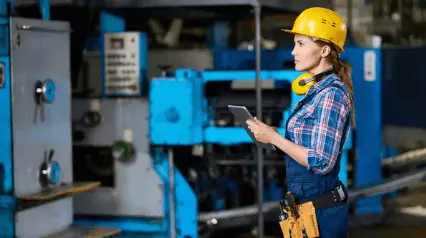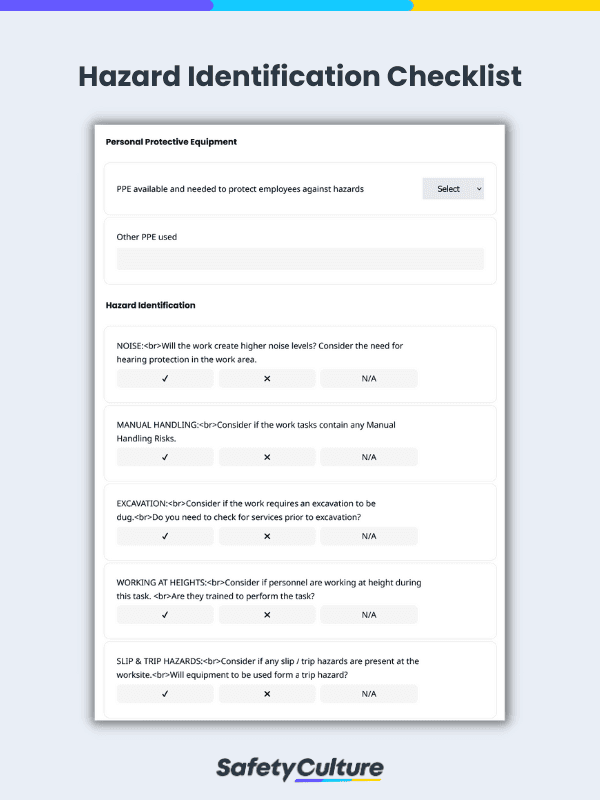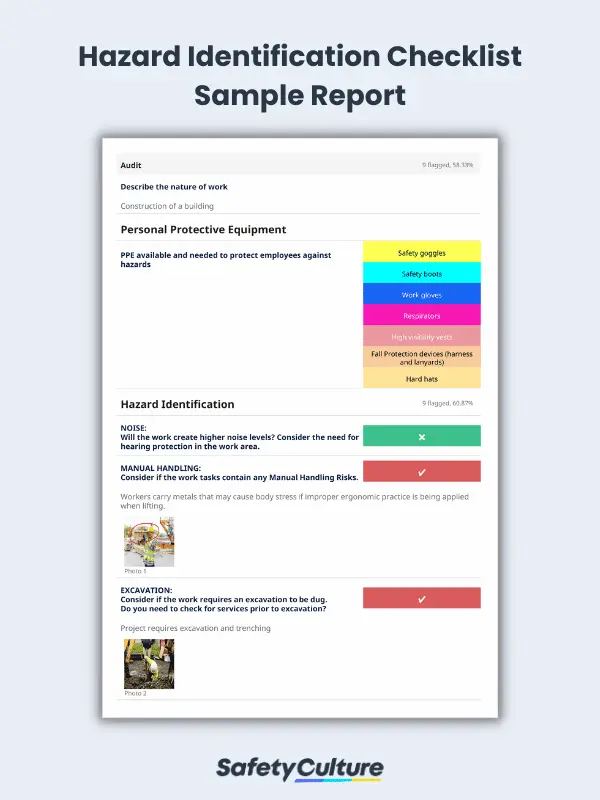What is a Hazard Identification Checklist?
A hazard identification checklist, also known as a hazard assessment form, is a tool used by safety officers in performing hazard assessments. The main purpose of a hazard assessment is to identify potential health and safety hazards by examining conditions or practices in the workplace. Performing regular hazard assessments is critical for implementing adequate corrective measures that can help prevent injuries and illnesses.
Ultimately, this process is covered by an organization’s holistic Health, Safety, and Environment or HSE management system.
What is Hazard Identification?
Hazard identification is the process of detecting potential sources of harm or damage from doing a job task in a specific work area. Identifying workplace hazards is crucial to implement controls that will help ensure the safety of workers and other stakeholders. Overall, it’s part of hazard assessment, the process of evaluating risks associated with a hazard and taking action to remove it or reduce risks involved with it.
4-Step Guide to Effectively Perform a Hazard Identification
A hazard assessment reduces the probability of workplace accidents occurring and ensures the safety of your employees. Easily perform fire risk assessments by following the steps below:
- Look – Walk around the facility and look for out-of-place items. Identify potential or existing hazards. Learn how to identify common workplace hazards.
- Think – Evaluate identified hazards and determine their underlying causes. Set appropriate controls to mitigate the likelihood of recurrence.
- Act – Implement corrective actions or controls.
- Monitor – Perform regular inspections and reviews to ensure that standard operating procedures and safety control measures are followed.
Why Use a Checklist for Identifying Hazards
Industries like construction, manufacturing, and transportation face numerous workplace risks in their daily operations. And as the risks increase, determining them can take more time and effort to accomplish.
Using a hazard identification checklist can help simplify this task by establishing a framework to document and examine workplace hazards. This structured approach facilitates a more efficient, consistent, and comprehensive recording of risks, leading to improved safety protocols, hazard control measures, and risk mitigation strategies.
Aside from this, here are 5 reasons why you should use a checklist for identifying hazards:
- It reduces the chances of oversight during the assessment process by accounting for all relevant hazard categories and work-specific considerations.
- It standardizes the assessment process to ensure that similar hazards are identified and evaluated consistently.
- It speeds up the hazard identification process by providing a ready-to-use tool at your disposal.
- It serves as a helpful resource for training and guiding individuals involved in the hazard assessment process.
- It aids in tracking the progress of risk management efforts and serves as evidence of due diligence.
What to Include in This Checklist
When creating your own checklist, it’s important to keep in mind the environment, activities, and components specific to your workplace. At its most basic form, a hazard identification checklist will include the following elements:
- Nature of work
- Personal Protective Equipment (PPE)
- Noise exposure
- Manual handling
- Excavation
- Working at heights
- Slip and trip hazards
- Site security and emergency preparedness
- Ambient conditions when working outdoors
- Cuts and abrasions
- Hazardous substances
- Plant and machinery
- Falling objects
- Lifting procedures
- Fire or ignition sources (hot work)
- Environmental impacts
- Decontamination of plant and equipment
- Vibration
- Spill prevention measures
- Waste disposal
- Customer and surrounding property
- Nearby work
- Asbestos
Hazard Identification Checklist Example
The image below illustrates how you can use a digital checklist for hazard identification:
FAQs about Hazard Identification
Hazard identification checklists play a vital role in systematically assessing potential risks in a particular work environment, process, or activity. By having a framework for examining various aspects where hazards may exist, organizations can take appropriate actions to reduce or eliminate risks and enhance overall safety.
A hazard identification checklist is a handy resource for safety professionals, supervisors, facility managers, and workers. This tool can be customized to specific work functions and industries, such as construction, manufacturing, and logistics.
Generally, workplaces should carry out the hazard identification process on a regular basis, but this frequency can change depending on specific circumstances. For example, the need for this procedure can arise due to newly detected risks or changes in the work environment.




